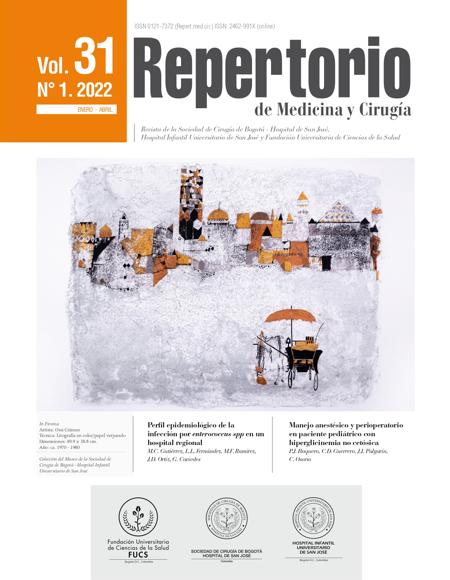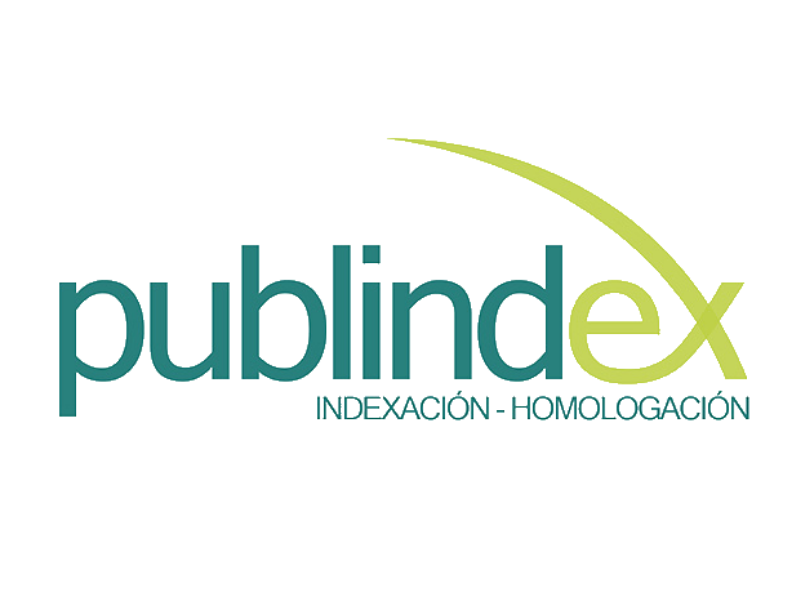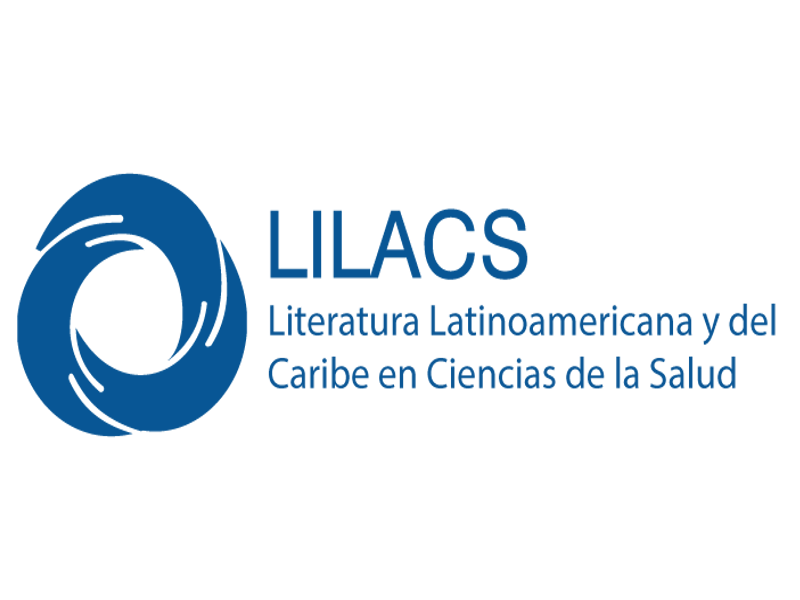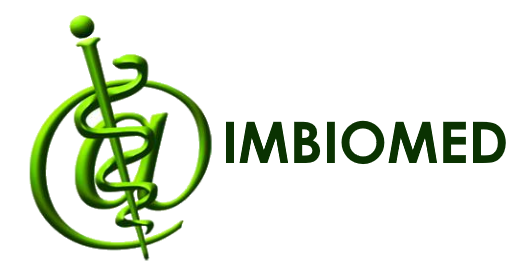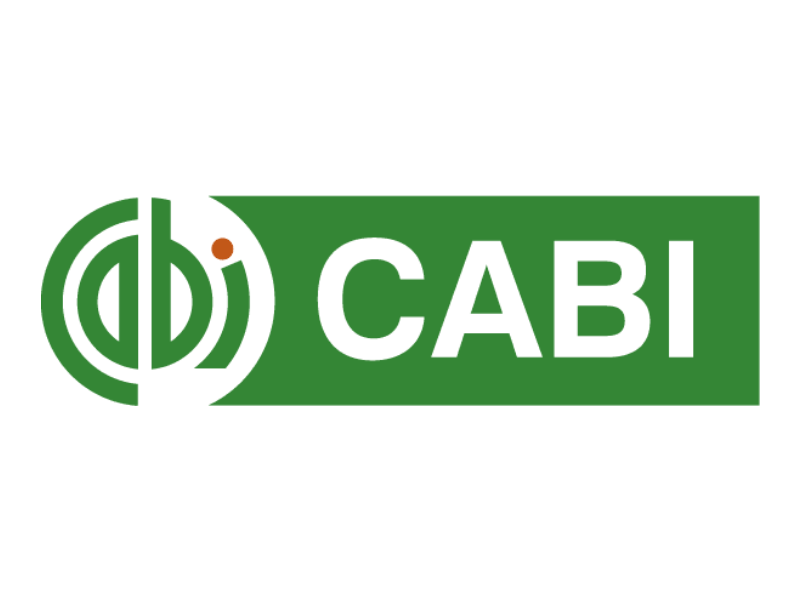Accidente cerebrovascular isquémico de la arteria cerebral media
Middle cerebral artery ischemic cerebrovascular accident
Cómo citar
Descargar cita
Esta obra está bajo una licencia internacional Creative Commons Atribución-NoComercial-CompartirIgual 4.0.
Mostrar biografía de los autores
La segunda causa de muerte a nivel mundial corresponde a los ataques cerebrovasculares (ACV), de los cuales más de dos terceras partes son de origen isquémico. Causan discapacidad a largo plazo por lo que conocer la anatomía de la circulación cerebral y las posibles manifestaciones clínicas del ACV isquémico permite sospechar, diagnosticar y brindar un manejo oportuno y apropiado, reduciendo el impacto en la salud y la calidad de vida del paciente y sus cuidadores. Objetivo: relacionar los últimos hallazgos en la anatomía arterial cerebral, los mecanismos fisiopatológicos y las manifestaciones clínicas del ACV isquémico de la arteria cerebral media (ACM). Materiales y métodos: revisión de la literatura mediante la búsqueda con términos MeSH en la base de datos Medline, incluyendo estudios, ensayos y metaanálisis publicados entre 2000 y 2020 en inglés y español, además de otras referencias para complementar la información. Resultados: se seleccionaron 59 publicaciones, priorizando la de los últimos 5 años y las más relevantes del rango temporal consultado. Conclusiones: son escasos los estudios sobre la presentación clínica de los ACV, lo que sumado a la variabilidad interindividual de la irrigación cerebral, dificulta la determinación clínica de la localización de la lesión dentro del lecho vascular. La reperfusión del área de penumbra isquémica como objetivo terapéutico se justifica por los mecanismos fisiopatológicos de la enfermedad.
Visitas del artículo 36066 | Visitas PDF 25178
Descargas
- Ministerio de Salud y Protección Social. Guía de práctica clínica para el diagnóstico, tratamiento y rehabilitación del episodio agudo del Ataque Cerebrovascular lsquémico en población mayor de 18 años. Guía No. 54. CINET. Bogotá; 2015. p. 376.
- García Alfonso C, Martínez Reyes AE, García V, Ricaurte Fajardo A, Torres I, Coral Casas J. Actualización en diagnóstico y tratamiento del ataque cerebrovascular isquémico agudo. Univ Médica. 2019;60(3):1–17. https://doi.org/10.11144/Javeriana.umed60-3.actu DOI: https://doi.org/10.11144/Javeriana.umed60-3.actu
- Hankey GJ. Stroke. Lancet. 2017 Feb;389(10069):641–54. doi: 10.1016/S0140-6736(16)30962-X DOI: https://doi.org/10.1016/S0140-6736(16)30962-X
- Sacco RL, Kasner SE, Broderick JP, Caplan LR, Connors JJ (Buddy), Culebras A, et al. An Updated Definition of Stroke for the 21st Century. Stroke. 2013;44(7):2064–89. doi: 10.1161/STR.0b013e318296aeca DOI: https://doi.org/10.1161/STR.0b013e318296aeca
- Yew KS, Cheng EM. Diagnosis of acute stroke. Am Fam Physician. 2015;91(8):528–36.
- Kim JS, Caplan LR. Clinical Stroke Syndromes. Front Neurol Neurosci. 2016;40:72-92. doi: 10.1159/000448303 DOI: https://doi.org/10.1159/000448303
- Mahajan S, Bhagat H. Cerebral oedema: Pathophysiological mechanisms and experimental therapies. J Neuroanaesth Crit Care. 2016;3(4):S22–8. doi: 10.4103/2348-0548.174731 DOI: https://doi.org/10.4103/2348-0548.174731
- González Delgado M, Bogousslavsky J. Superficial Middle Cerebral Artery Territory Infarction. Front Neurol Neurosci. 2012;30:111-4. doi: 10.1159/000333604 DOI: https://doi.org/10.1159/000333604
- Belagaje SR. Stroke Rehabilitation. Contin Lifelong Learn Neurol. 2017;23(1, Cerebrovascular Disease):238–53. doi: 10.1212/CON.0000000000000423 DOI: https://doi.org/10.1212/CON.0000000000000423
- Pradilla A. G, Vesga A. BE, León-Sarmiento FE. Estudio neuroepidemiológico nacional (EPINEURO) colombiano. Rev Panam Salud Pública. 2003;14(2):104–11. DOI: https://doi.org/10.1590/S1020-49892003000700005
- Vangen-Lønne AM, Wilsgaard T, Johnsen SH, Løchen M-L, Njølstad I, Mathiesen EB. Declining Incidence of Ischemic Stroke: What Is the Impact of Changing Risk Factors? The Tromsø Study 1995 to 2012. Stroke. 2017;48(3):544–550. doi: 10.1161/STROKEAHA.116.014377 DOI: https://doi.org/10.1161/STROKEAHA.116.014377
- Krishnamurthi R V., Feigin VL, Forouzanfar MH, Mensah GA, Connor M, Bennett DA, et al. Global and regional burden of first-ever ischaemic and haemorrhagic stroke during 1990–2010: findings from the Global Burden of Disease Study 2010. Lancet Glob Heal. 2013;1(5):e259–81. doi: 10.1016/S2214-109X(13)70089-5 DOI: https://doi.org/10.1016/S2214-109X(13)70089-5
- World Health Organization. Global Health Estimates 2016: Deaths by Cause, Age, Sex, by Country and by Region, 2000-2016. Geneva; 2018.
- Benjamin EJ, Blaha MJ, Chiuve SE, Cushman M, Das SR, Deo R, et al. Heart Disease and Stroke Statistics—2017 Update: A Report From the American Heart Association. Circulation. 2017;135(10):e146–e603. doi: 10.1161/CIR.0000000000000485 DOI: https://doi.org/10.1161/CIR.0000000000000491
- Grysiewicz RA, Thomas K, Pandey DK. Epidemiology of Ischemic and Hemorrhagic Stroke: Incidence, Prevalence, Mortality, and Risk Factors. Neurol Clin. 2008;26(4):871–95, vii. doi: 10.1016/j.ncl.2008.07.003 DOI: https://doi.org/10.1016/j.ncl.2008.07.003
- Morgenstern LB. Excess Stroke in Mexican Americans Compared with Non-Hispanic Whites: The Brain Attack Surveillance in Corpus Christi Project. Am J Epidemiol. 2004;160(4):376–83. doi: 10.1093/aje/kwh225 DOI: https://doi.org/10.1093/aje/kwh225
- White H, Boden-Albala B, Wang C, Elkind MSV, Rundek T, Wright CB, et al. Ischemic Stroke Subtype Incidence Among Whites, Blacks, and Hispanics. Circulation. 2005 Mar 15;111(10):1327–31. doi: 10.1161/01.CIR.0000157736.19739.D0 DOI: https://doi.org/10.1161/01.CIR.0000157736.19739.D0
- Schneider AT, Kissela B, Woo D, Kleindorfer D, Alwell K, Miller R, et al. Ischemic Stroke Subtypes: a population-based study of incidence rates among blacks and whites. Stroke. 2004;35(7):1552–6. doi: 10.1161/01.STR.0000129335.28301.f5 DOI: https://doi.org/10.1161/01.STR.0000129335.28301.f5
- Sommer CJ. Ischemic stroke: experimental models and reality. Acta Neuropathol. 2017;133(2):245–61. doi: 10.1007/s00401-017-1667-0 DOI: https://doi.org/10.1007/s00401-017-1667-0
- Cure J. Anatomy of the Brain’s Arterial Supply. In: Cerebrovascular Ultrasound in Stroke Prevention and Treatment. Oxford, UK: Wiley-Blackwell; 2011. p. 26–44. DOI: https://doi.org/10.1002/9781444327373.ch3
- Liebeskind DS, Caplan LR. Intracranial Arteries - Anatomy and Collaterals. In: Frontiers of Neurology and Neuroscience. 2017. p. 1–20. DOI: https://doi.org/10.1159/000448264
- de Mendivil AO, Alcalá-Galiano A, Ochoa M, Salvador E, Millán JM. Brainstem Stroke: Anatomy, Clinical and Radiological Findings. Semin Ultrasound CT MRI. 2013;34(2):131–41. doi: 10.1053/j.sult.2013.01.004 DOI: https://doi.org/10.1053/j.sult.2013.01.004
- Cereda C, Carrera E. Posterior Cerebral Artery Territory Infarctions. Front Neurol Neurosci. 2012;30:128-31. doi: 10.1159/000333610 DOI: https://doi.org/10.1159/000333610
- Toyoda K. Anterior Cerebral Artery and Heubner’s Artery Territory Infarction. Front Neurol Neurosci. 2012;30:120-2. doi: 10.1159/000333607. DOI: https://doi.org/10.1159/000333607
- Zhang Y, Yang W, Zhang H, Liu M, Yin X, Zhang L, et al. Internal Carotid Artery and its Relationship with Structures in Sellar Region: Anatomic Study and Clinical Applications. World Neurosurg. 2018;110:e6–e19. doi: 10.1016/j.wneu.2017.09.145 DOI: https://doi.org/10.1016/j.wneu.2017.09.145
- Gailloud P, Clatterbuck RE, Fasel JHD, Tamargo RJ, Murphy KJ. Segmental agenesis of the internal carotid artery distal to the posterior communicating artery leading to the definition of a new embryologic segment. AJNR Am J Neuroradiol. 2004;25(7):1189–93.
- Shapiro M, Becske T, Riina HA, Raz E, Zumofen D, Jafar JJ, et al. Toward an Endovascular Internal Carotid Artery Classification System. Am J Neuroradiol. 2014;35(2):230–6. doi: 10.3174/ajnr.A3666 DOI: https://doi.org/10.3174/ajnr.A3666
- Bouthillier A, van Loveren HR, Keller JT. Segments of the Internal Carotid Artery: A New Classification. Neurosurgery. 1996;38(3):425–33. discussion 432-3. doi: 10.1097/00006123-199603000-00001 DOI: https://doi.org/10.1227/00006123-199603000-00001
- Abdulrauf S, Ashour A, Marvin E, Coppens J, Kang B, Hsieh TY, et al. Proposed clinical internal carotid artery classification system. J Craniovertebr Junction Spine. 2016;7(3):161-170. doi: 10.4103/0974-8237.188412 DOI: https://doi.org/10.4103/0974-8237.188412
- Shafafy R, Suresh S, Afolayan JO, Vaccaro AR, Panchmatia JR. Blunt vertebral vascular injury in trauma patients: ATLS® recommendations and review of current evidence. J Spine Surg. 2017;3(2):217–225. doi: 10.21037/jss.2017.05.10 DOI: https://doi.org/10.21037/jss.2017.05.10
- Shin HY, Park JK, Park SK, Jung GS, Choi YS. Variations in Entrance of Vertebral Artery in Korean Cervical Spine: MDCT-based Analysis. Korean J Pain. 2014;27(3):266-270. doi: 10.3344/kjp.2014.27.3.266 DOI: https://doi.org/10.3344/kjp.2014.27.3.266
- Gunabushanam G, Kummant L, Scoutt LM. Vertebral Artery Ultrasound. Radiol Clin North Am. 2019;57(3):519–533. doi: 10.1016/j.rcl.2019.01.011 DOI: https://doi.org/10.1016/j.rcl.2019.01.011
- Jenkins JS, Stewart M. Endovascular Treatment of Vertebral Artery Stenosis. Prog Cardiovasc Dis. 2017;59(6):619–625. doi: 10.1016/j.pcad.2017.02.005 DOI: https://doi.org/10.1016/j.pcad.2017.02.005
- Hartkamp NS, Petersen ET, De Vis JB, Bokkers RPH, Hendrikse J. Mapping of cerebral perfusion territories using territorial arterial spin labeling: techniques and clinical application. NMR Biomed. 2013;26(8):901–12. doi: 10.1002/nbm.2836 DOI: https://doi.org/10.1002/nbm.2836
- Uchiyama N. Anomalies of the Middle Cerebral Artery. Neurol Med Chir (Tokyo). 2017;57(6):261–266. doi: 10.2176/nmc.ra.2017-0043 DOI: https://doi.org/10.2176/nmc.ra.2017-0043
- Liebeskind DS, Caplan LR. Anatomy of Intracranial Arteries. In: Intracranial Atherosclerosis. Oxford, UK: Wiley-Blackwell; 2009. p. 1–18. DOI: https://doi.org/10.1002/9781444300673.ch1
- Cilliers K, Page BJ. Review on the anatomy of the middle cerebral artery; cortical branches, branching pattern and anomalies. Turk Neurosurg. 2016;27(5):671–681. doi: 10.5137/1019-5149.JTN.18127-16.1 DOI: https://doi.org/10.5137/1019-5149.JTN.18127-16.1
- Rhoton AL. The Supratentorial Arteries. Neurosurgery. 2002;51(suppl_4):S1-53-S1-120. DOI: https://doi.org/10.1097/00006123-200210001-00003
- Tatu L, Moulin T, Vuillier F, Bogousslavsky J. Arterial Territories of the Human Brain. Front Neurol Neurosci. 2012;30:99-110. doi: 10.1159/000333602 DOI: https://doi.org/10.1159/000333602
- Kim D-E, Park J-H, Schellingerhout D, Ryu W-S, Lee S-K, Jang MU, et al. Mapping the Supratentorial Cerebral Arterial Territories Using 1160 Large Artery Infarcts. JAMA Neurol. 2019;76(1):72-80. doi: 10.1001/jamaneurol.2018.2808 DOI: https://doi.org/10.1001/jamaneurol.2018.2808
- Saposnik G, Del Brutto OH, Iberoamerican Society of Cerebrovascular Diseases. Stroke in South America: a systematic review of incidence, prevalence, and stroke subtypes. Stroke. 2003;34(9):2103–7. doi: 10.1161/01.STR.0000088063.74250.DB DOI: https://doi.org/10.1161/01.STR.0000088063.74250.DB
- Ng YS, Stein J, Ning M, Black-Schaffer RM. Comparison of Clinical Characteristics and Functional Outcomes of Ischemic Stroke in Different Vascular Territories. Stroke. 2007;38(8):2309–14. doi: 10.1161/STROKEAHA.106.475483 DOI: https://doi.org/10.1161/STROKEAHA.106.475483
- Markus HS. Cerebral perfusion and stroke. J Neurol Neurosurg Psychiatry. 2004;75(3):353–61. doi: 10.1136/jnnp.2003.025825 DOI: https://doi.org/10.1136/jnnp.2003.025825
- Fantini S, Sassaroli A, Tgavalekos KT, Kornbluth J. Cerebral blood flow and autoregulation: current measurement techniques and prospects for noninvasive optical methods. Neurophotonics. 2016;3(3):031411. doi: 10.1117/1.NPh.3.3.031411 DOI: https://doi.org/10.1117/1.NPh.3.3.031411
- George PM, Steinberg GK. Novel Stroke Therapeutics: Unraveling Stroke Pathophysiology and Its Impact on Clinical Treatments. Neuron. 2015;87(2):297–309. doi: 10.1016/j.neuron.2015.05.041 DOI: https://doi.org/10.1016/j.neuron.2015.05.041
- Atkins ER, Brodie FG, Rafelt SE, Panerai RB, Robinson TG. Dynamic Cerebral Autoregulation Is Compromised Acutely following Mild Ischaemic Stroke but Not Transient Ischaemic Attack. Cerebrovasc Dis. 2010;29(3):228–35. doi: 10.1159/000267845 DOI: https://doi.org/10.1159/000267845
- Jordan JD, Powers WJ. Cerebral Autoregulation and Acute Ischemic Stroke. Am J Hypertens. 2012;25(9):946–50. doi: 10.1038/ajh.2012.53 DOI: https://doi.org/10.1038/ajh.2012.53
- Smith AG, Rowland Hill C. Imaging assessment of acute ischaemic stroke: a review of radiological methods. Br J Radiol. 2017;91(1083):20170573. doi: 10.1259/bjr.20170573 DOI: https://doi.org/10.1259/bjr.20170573
- Yao H, Ago T, Kitazono T, Nabika T. NADPH Oxidase-Related Pathophysiology in Experimental Models of Stroke. Int J Mol Sci. 2017;18(10):2123. doi: 10.3390/ijms18102123 DOI: https://doi.org/10.3390/ijms18102123
- Macrez R, Ali C, Toutirais O, Le Mauff B, Defer G, Dirnagl U, et al. Stroke and the immune system: from pathophysiology to new therapeutic strategies. Lancet Neurol. 2011;10(5):471–80. doi: 10.1016/S1474-4422(11)70066-7 DOI: https://doi.org/10.1016/S1474-4422(11)70066-7
- Stokum JA, Gerzanich V, Simard JM. Molecular pathophysiology of cerebral edema. J Cereb Blood Flow Metab. 2016;36(3):513–38. doi: 10.1177/0271678X15617172 DOI: https://doi.org/10.1177/0271678X15617172
- Deb P, Sharma S, Hassan KM. Pathophysiologic mechanisms of acute ischemic stroke: An overview with emphasis on therapeutic significance beyond thrombolysis. Pathophysiology. 2010;17(3):197–218. doi: 10.1016/j.pathophys.2009.12.001 DOI: https://doi.org/10.1016/j.pathophys.2009.12.001
- Staykov D, Gupta R. Hemicraniectomy in Malignant Middle Cerebral Artery Infarction. Stroke. 2011;42(2):513–6. https://doi.org/10.1161/STROKEAHA.110.605642 DOI: https://doi.org/10.1161/STROKEAHA.110.605642
- Ferrarotti TW. Stroke. J Am Acad Physician Assist. 2017;30(5):50–51. doi: 10.1097/01.JAA.0000515555.29850.09 DOI: https://doi.org/10.1097/01.JAA.0000515555.29850.09
- Nor AM, Davis J, Sen B, Shipsey D, Louw SJ, Dyker AG, et al. The Recognition of Stroke in the Emergency Room (ROSIER) scale: development and validation of a stroke recognition instrument. Lancet Neurol. 2005;4(11):727–734. doi: 10.1016/S1474-4422(05)70201-5 DOI: https://doi.org/10.1016/S1474-4422(05)70201-5
- Mao H, Lin P, Mo J, Li Y, Chen X, Rainer TH, et al. Development of a new stroke scale in an emergency setting. BMC Neurol. 2016;16(1):168. doi: 10.1186/s12883-016-0695-z DOI: https://doi.org/10.1186/s12883-016-0695-z
- Jameson JL, Kasper DL, Longo DL, Fauci AS, Hauser SL, Loscalzo J. Harrison’s Principles of Internal Medicine. 20th ed. New York: McGraw-Hill; 2018.
- Bernal B, Perdomo J. Brodmans Interactive Atlas. In: fMRI-Consulting. 2008.
- Brodmann K. Vergleichende Lokalisationslehre der Grosshirnrinde in ihren Prinzipien dargestellt auf Grund des Zellenbaues. Leipzig: Barth; 1909.
